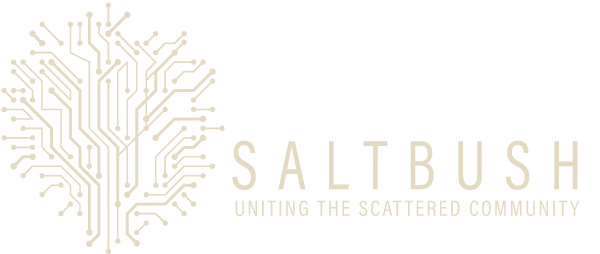
Exploring Community: Life has changed and with it our sense of community – in the broader culture and in the church.
The church struggles to imagine what God’s community looks like given the fracturing of the frame work of Christendom[1] – that time in our history, now passed, when the church and the state worked together. Beyond the Church, the western world’s sense of what community is has been disrupted and the old “norms” no longer hold. In the church, the consequences of uber individualism, personal salvation and self-actualisation have come home to disrupt the sense of community once experienced by many.
This disruption to community life affects everything – The church’s structures, its ministry agents and its capacity to sustain the financial, structural and property dynamic that until now has typified what it has been to be a congregation. For those who act as ministers and leaders within these communities of faith, co-dependency has driven the search to renew old structures and preserve roles that sustain financial independence and patterns of life.
The question is: can the church “for the sake of the world”[2] renew its sense of what it is to be “community” and join with the interests of God to gather people, break bread and tell the stories?

God’s call to the Church has always been to be a servant of the pledge and foretaste of that coming reconciliation and renewal, which is the end in view for the whole creation[3]. Therefore, kingdom community is present wherever God’s gifts of life, liberation, love (and learning[4]) are manifest within and across social collectives[5].
Community in depth:
From the beginning of colonisation in Australia, local churches were established by the major Christian denominations. Land was granted to build churches in towns as they were gazetted and began to grow. As the towns grew, so did local congregations and along with growth came a sense of community that was mono-cultural and cohesive in its theological expressions.
Later, as Australia’s population grew rapidly during the post war eras, local churches were built as each suburb was established, making it possible for people to walk to church in their “community”. Local communities took on a sameness that engendered a:
- sense of solidarity – we are building and growing Australia together;
- sense of significance – what we/I am achieving has worth and value;
- sense of security – I feel I have a place where I am able to grow and flourish.
David Clark in his book “Breaking the Mould of Christendom” expresses this in terms of people feeling they have a place to stand (security), a role to play (significance) and a world to which to belong (solidarity)[6].
What once held our sense of community has shifted from a geographic location gathered around a local enterprise – farming, manufacturing or just house building (this is what we all do or contribute to the whole) to groups of dormitory housing, sheltering people who engage in many activities and work practices or none. Those areas of security, significance and solidarity as defined post war up to and including much of the 70’s and 80’s have broken down. There is no longer a sense that what I do in my house and in my suburb has much of anything to do with my neighbour or the wider society.
In rural areas, our understanding of community has changed with the deregulation of farm production. Where once family farmers shared some aspects of the peak work periods and social events, today farmers are competing for niche markets and working longer and harder. While some of that sense of belonging to a particular rural community and being there for my neighbour remains, there is a growing sense of the individual family business or of the Agri Business farm getting ahead.
Additionally, it may once have been assumed that folk from any particular location held a common or close cultural heritage. This is no longer the case in urban and regional Australia, with the more usual experience, being multicultural and multi-faith.
Societal shifts also mean that expectations around people attending worship on Sundays have completely gone. Those who want to go to worship do so and those who choose to engage with other pursuits do so without guilt. Sport, shopping, social activities and family time encroach on traditional Sunday worship time. No amount of letter dropping, changing the music, adding a band or making the pews more comfortable will entice people “into” worship on a Sunday morning.
However, there is an increase in the individual pursuit of “spirituality”, those who identify as “spiritual and not religious”. Individual questing for “spiritual” and “community” connection takes many forms. From attending meditation, hanging out with friends at the café, lighting a candle in some place of significance to taking care of the environment.
Individuals, I believe, still seek “community”. It is intrinsically human that we seek to relate to others and the Church has a lot to offer in enabling places of community that resonate, but the forms in which the church has offered those in the past have shifted and changed.
Community questions:
The church’s scripture, doctrine and practice has always assumed that living, gathering and practicing faith within community was the norm. The difficulty for the church is that the wider society has decided that the current form/practice of “church” no longer creates community that resonates with them.
While there are many voices offering direction on what it means to be “community” within society, some of which are extremely divisive, the Christian church’s claim is that it is God who calls together community.
The Greek word Koinonia gives the church an example of what community looks like. Koinonia is understood to be like a people of fellowship, a communion of sharing, of contributing and participating, of forming together to practice faith and shape actions through faithful discipleship. For Christians this is what community looks and feels like.
The question then is: can the church change its practices to create a community that resonates more broadly and remain faithful to scripture and tradition?

Church & Community:
Two of the central doctrines of the church are “Trinity” and the “Kingdom of God”. These two understandings assist the church to identify, in part, the nature of God and where God is located.
The Church’s claim is that the very nature of God is “community”, three persons yet one. Like a dance of life, each partner taking the lead, then stepping back, always moving and acting in concert with the others to create, renew and sustain life[7].
The other claim of the church is that God has indeed located God’s self in the midst of creation, among us, revealed in the life, death and resurrection of Jesus of Nazareth[8].
God calls life into being; life together then is at the heart of community. Though it is not the total picture, such an understanding of the nearness of God is at the very heart of a vibrant faith[9].
If, at the heart of the Christian faith lies God’s creative, reconciling and renewing life revealed in Jesus, then the example of Jesus leads the church to understand the nature of “community”. Lesley Newbigin describes the work of Jesus like this:
“The mission of Jesus was to announce and embody the reign of God, a reign which claims jurisdiction over the whole created world and all that is in it.[10]”
The church then is called to proclaim the reign of God pointing to the life, death and resurrection of Jesus as the example of what the Kingdom of God looks like.
The church’s task is to enact the Kingdom in the midst of society. Like Jesus it is to practice:
- Feasting – with unexpected guest and inclusive table fellowship;
- Justice – overturning oppressive structures and relating to each other and the whole creation in ways that bring in the “shalom” of God;
- Healing – restoring to “health” those trapped physically, emotionally and spiritually; and it proclaims
- Good News – the kingdom of God drawn near[11].
Another way of considering God’s call to be community is to consider the call of Abram[12] to be a blessing to the nations. This call is grounded in covenantal relationship, it brings good news to all and there is a kind of “salvation” in the at-one-ment through community. The church may then shape its life together as a community that blesses the wider society by loving God and loving its neighbour as itself[13].
As a community of faith, it would find ways together that enabled; feasting, justice, healing, proclamation, good news and blessing to those with whom it came in contact. It would be a transforming presence in the lives of the people and it would treasure and tend the creation.
[1] Page 58. Clark. David. 2005. Breaking the Mould of Christendom. Epworth London. Quoting Adrian Nichols 1999, page 1. As ‘a society where historic Christian faith provides the cultural framework for social living, as well as the official religious form of the State”
[2] Page 111. Croft Steven. 2002. Transforming Communities: RE-imagining the church for the 21st century. Darton, Longman & Todd. London
[3] Par 3 Basis of Union 1992 edition
[4] Page 32. Clark. David. 2005. Breaking the Mould of Christendom. Epworth London. David adds Learning to the 3 L in the following chapter.
[5] Page 26. Ibid.
[6] Page 17. Clark. David. 2005. Breaking the Mould of Christendom. Epworth London.
[7] Par 4 Basis of Union 1992 edition, John 20: 19-23, Acts 2: 1-4,
[8] Luke 4: 14-21, John 1: 1-5, 2 Cor 5: 19
[9] Loc 380. Butler Bass. Diana. 2015. Grounded. Harper Collins Sydney
[10] Page 25. Clark. David. 2005. Breaking the Mould of Christendom. Epworth London. Quoting Newbigin 1983, p. 34
[11] Luke 4: 18-19
[12] Gen 12: 1-3
[13] Mark 12: 28-34
